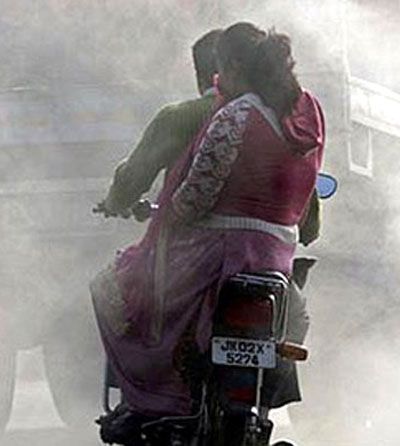
India’s National Air Quality Index network, with 39 operating stations, compares poorly with the 1,500 stations in China.
Indian citizens had a higher exposure to average particulate matter than their Chinese counterparts, an analysis of satellite data on particulate matter has shown, environmental group Greenpeace has claimed.
It said while China’s strong measures to curb pollution have contributed to the biggest year-on-year air quality improvement on record, in contrast, India’s pollution levels continued a decade-long increase to reach the highest level on record.
According to the World Health Organisation, India is home to 13 of the 20 most polluted cities in the world, with air pollution levels deteriorating during the past decade, particularly in north India.
Greenpeace, in its National Air Quality Index ranking report had revealed that as many as 15 of the 17 Indian cities with NAQI stations showed levels of air pollution that far exceeded prescribed Indian standards.
The report also revealed 23 of the 32 stations across India showing levels which were more than 70 per cent higher than national standards, putting public health at risk.
India’s NAQI network, with 39 operating stations, compares poorly with the 1,500 stations in China.
The satellite images until 2005 showed India’s pollution, while serious, was lot lower than eastern China’s. However, as of 2015, India’s particulate pollution stands higher than of China’s, after increasing at an average rate of two per cent over the past decade.
In China, particulate pollution levels rose an estimated 20 per cent between 2005 and 2011 due to growing dependence on fossil fuels.
However, after adopting a comprehensive National Action Plan in 2013 along with strong policies and stricter enforcement, China’s particulate trend started bending, as 2015 witnessed a fall of 15 per cent as compared to 2014.
Looking at the change in particulate levels in the past 10 years, very significant reductions are seen across Eastern and Central China, testimony to the national scale of the key measures to tackle air pollution.
In India, while the pollution levels are highest in the north, the trend of worsening pollution levels is seen across the subcontinent, with West Bengal, Bihar, UP and AP displaying the largest increases, and the NCR also seeing a significant increase.
Greenpeace has urged the government to issue red alerts during bad air days and take policy decisions in the long term.
Air pollution monitoring only covers one quarter of the population in China and only a few per cent of the population in India, and in both countries, PM2.5 monitoring networks have only been created very recently, so long-term trends cannot be assessed.
The image is used for representational purpose only. Photogaph: Reuters











